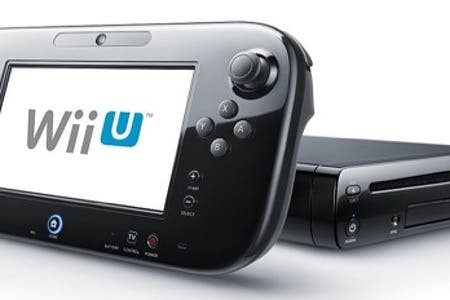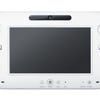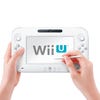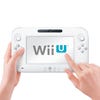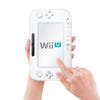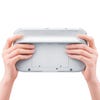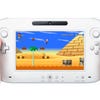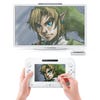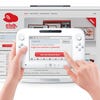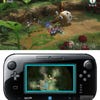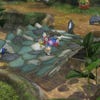How Powerful is the Wii U Really?
And why, for many developers, it doesn't matter.
How powerful is the Wii U really? Is it less powerful than the PS3 and Xbox 360? Is it as powerful? More powerful? And how will it compare to the next generation? What quality of graphics will we see from Wii U games?
Answering these questions is impossible, given how abstract the idea of console power is in the first place. Is X twice as powerful as Y? Is Y 10 times as powerful than Z? And what does power mean anyway?
And yet, we want answers. Part of what makes us love games is what makes them look so good. Advancements in graphics technology have defined the game industry as new hardware comes and goes. Graphics, for so many, mean so much.
The Wii U's true power has been shrouded in mystery ever since it was announced, with developers working on launch titles gagged by strict non-disclosure agreements and ever shifting development kits. Now, though, as we near launch, final kits are in the wild. And, crucially, developers Eurogamer spoke to as part of a wide-ranging investigation into the innards of the Wii U now have final specifications.
Here's what they told us.
The CPU: The Wii U's IBM-made CPU is made up of three Power PC cores. We've been unable to ascertain the clock speed of the CPU (more on this later), but we know out of order execution is supported.
RAM in the final retail unit: 1GB of RAM is available to games.
GPU: The Wii U's graphics processing unit is a custom AMD 7 series GPU. Clock speed and pipelines were not disclosed, but we do know it supports DirectX 10 and shader 4 type features. We also know that eDRAM is embedded in the GPU custom chip in a similar way to the Wii.
"It's comparable to the current generation and a bit more powerful than that."
We asked Blitz Games Studios' design director John Nash the impossible to answer question: is the Wii U more powerful than the current generation? "It's comparable to the current generation and a bit more powerful than that," he replied. Pretty unscientific, eh?
First, the positives. Where the Wii U outdoes the current generation is in RAM and GPU. The Wii U has, effectively, twice the RAM available to games that the Xbox 360 and the PS3 each have. And we hear much praise of the GPU.
"The Wii U is a nice console to work with because it's got so much RAM in comparison [to the PS3 and Xbox 360]," another Wii U developer, who wished to remain anonymous, told us. "For E3 we simply dumped the whole game into memory and never once used the disc after the content was loaded from it."
It is the RAM in combination with the GPU that means Wii U games have the potential to outshine Xbox 360 and PS3 games. Indeed, according to one source, the Wii U version of his company's game will be "the smoothest console version".
"We're a GPU-heavy game," the source continued. "Wii U has a powerful GPU with more oomph than the rivals - and is more modern in architecture and shader support, which may come in handy later on.
"The CPU on the other hand is a different question. We are not limited by it but some other games might suffer from it. Still, because of the GPU, I expect most multi-platform games to look the best on Wii U, even if the difference might not be huge sometimes."
The mention of the Wii U's CPU raised our eyebrow - as it has done for many developers we've spoken to. While its clock speed remains private, most developers agree it is lower than the clock speed offered by the PS3 and Xbox 360's CPUs - disappointing for many.
It remains to be seen what impact this will have in the future, but we've been able to ascertain the impact it has already had. We were told that when early Wii U developer kits were sent to studios, Nintendo indicated the console would support four GamePads at the same time. But as the dev kits were refined and the tech specs fell into place, it became apparent this would not be the case.
"The funny thing about Wii U is, as each week went on, we discovered more cool things we could do with it," Nash said. "It's very much a fast-moving space with shifting sands. Because we were fairly early on with this, the specification for the machine wasn't nailed down. In fact, Nintendo were still chasing the idea of having four of the tablets running concurrently. Now they've stepped away from that and said you can have up to two depending on what you're doing in the game. That's given us a base level specification which has changed our thinking and some of our design.
"Now we've got a final specification of what's going to be delivered on release, we're re-factoring a lot of our designs because the assumptions we made are now in concrete. We know what the specification is going to be."
According to Nash, bandwidth issues associated with having four concurrent streams coming from one Wii U machine to four GamePad screens stamped out the idea of support for four GamePad controllers. "As game producers and consumers, of course we would be absolutely delighted if the thing would run four Wii U tablets," he said. "That would be great. And it might even be part of their strategy for the next evolution if they do another rev of hardware.
"But at the moment it's purely limited to processing and signal transmission bandwidth and a combination thereof."
As it is, Wii U games that stream to two GamePads will see their performance impacted in terms of frame rate. But developers may be able to work around this issue. "That's one of the areas we're looking at to find out if that's always the case," Nash said. "And even if it is, if you want to use two screens, you need to design around that and produce a game genre, type and set of mechanics where that, fundamentally, is not going to cause any problem whatsoever.
"The holy grail of everything having to run at 60 frames per second is great, but it's only actually that important when you're using a twitch game or a shooter or a racer. Below that, it doesn't matter at all. If you're playing a third-person character game then it absolutely doesn't matter."
Indie developer Two Tribes caught the eye recently when it said its 2D platformer game Toki Tori 2 would run in full, native 1080p on Wii U. This is something only a handful of games on PS3 have managed, so backs up much of what we've been told about the graphics capabilities of Nintendo's hardware. But given that Nintendo's own Wii U games only run natively in 720p (from what we've seen so far), we were keen to get more information.
"GPU fillrate is not a major bottleneck for our game, so we should be fine rendering our game in 1080p," Two Tribes boss Martijn Reuvers told Eurogamer. "In fact, it already runs on 1080p on the Wii U, without problems." And what of the memory use of the game, given games must factor in streaming to the GamePad? "It is an extra framebuffer, which obviously consumes some memory," Reuvers said. "But with Toki Tori we don't run into memory problems, so this extra buffer isn't a problem."
So, what we have here is a 2D game, similar to Ubisoft's Rayman Legends, that runs in full 1080p on Wii U. It's unlikely that complex 3D games will manage a similar feat, but it's good to know developers, even at this early stage, are able to achieve it.
The next next-gen
Assuming Microsoft and Sony launch their next-generation consoles late next year, the Wii U will enjoy 12 months as (potentially) the most powerful console on the market. But the development community expects big things from the Xbox 720 and PS4 - power leaps that make costly investments worthwhile.
Then, the Wii U will lag significantly behind in the graphics stakes. At least, that's what we're being told. The next Xbox, we understand, allows developers to use the DX11 graphics standard to easily shift code from PC to the console. The Wii U supports DX10 (one of the reasons you won't see an Unreal Engine 4 game on it). And let's not forget that processor.
"Given the environment where there is a lot of hearsay and whispers about what PlayStation and Xbox are going to do, of course people are going to compare those whispers against what's happening with the Nintendo hardware," Nash said. "That happens on every revolution. The first person out of the blocks to say, on the next rev of hardware we're doing this, there are immediately comparisons between that and the rumours that are happening with the other platforms.
"And yes, I would definitely say that people would be concerned because the disparity between the two is quite a lot. However, that's what happened with the Wii console versus PS3 and Xbox 360. But the point is the quality of the experience you derive from the console is not index linked to the clock cycles. It really doesn't make any difference. You build an experience based on what that machine's capable of, and you take advantage of what those machines have in terms of unique abilities.
"So, for me, it's like, yeah, I'd be worried if I was briefed to produce a first-person shooter to the same quality as something that's going to appear on the next rev of PlayStation and Xbox. Of course I'd be hugely worried. You're not going to be able to do that. But being as my brief is never going to be that, I'm not worried about that because I'm going to make an entirely different flavour of game on the Nintendo hardware."
The Wii U versions of multi-platform games shown to the public have done little to fill Nintendo fans with confidence. The Wii U version of Batman: Arkham City looks poor in comparison to the PS3 and Xbox 360 versions, and the less said about Ninja Gaiden 3 on Wii U the better.
But these games do not reflect the power potential of the machine. As with all fixed hardware, over time game engines are optimised, developers become more familiar with the silicon and tricks of the trade are established. Wii U games released four years from now will look much better even than first-party efforts such as Pikmin 3, New Super Mario Bros. U and Nintendo Land.
Indeed, we've seen this before the console has launched. One developer working on a Wii U launch game told us he was able to optimise his game's CPU main core usage by up to 15 per cent throughout the course of development, and further optimisations are expected before the game comes out.
Why specs don't matter
There's another school of thought: for so many developers actively working on Wii U, its technical specifications aren't important. The Wii U is what it is. It's better than the current gen in some areas, worse in others. It won't compete with the next gen, but this is Nintendo. That's not the point.
"It's very easy for people to get hung up on hardware specs and technical specs," Nash said. "It's great to have a massive processor that's got a graphics pipeline that uses DX11, but what people need to focus on particularly for games going forward, is, what kind of experience can you build in the space of possibility afforded by the hardware in terms of features? Not in clock cycles. Does it connect out to the internet well? Does it connect to mobile well? How does it connect to your other friends and involve them in that experience? That's where games are moving forwards.
"Nintendo's approach is to say, we're going to package that other screen with the console straight out of the box so there's nothing to worry about and the developers have a stable platform, whereas maybe the other platform holders are saying, maybe we're going to involve other devices. That will bring another set of problems. Sony and Microsoft will go toe to toe again as they have done on this rev. They will do the same on the next one. Nintendo are doing something different.
"There's going to be some geek out there who will screwdriver that processor out from the machine, run it through all the tests and compare it to Pentium 3 upwards and tell everybody how rubbish it is. Of course they will. That's great and I applaud people for doing such things. However, as a game designer that means absolutely nothing to me. The simple fact of the matter is, that's the box they're shipping, so we have to design and use that to the best of our abilities.
"There's going to be some geek out there who will screwdriver that processor out from the machine, run it through all the tests and compare it to Pentium 3 upwards and tell everybody how rubbish it is. Of course they will. That's great and I applaud people for doing such things. However, as a game designer that means absolutely nothing to me."
"On the hype rollercoaster ride we go on with all new hardware, everybody's super-focused on specific details, processor speed, RAM and all of that stuff. But people need to look beyond that, because Nintendo's rationale in terms of building game platforms and exploiting their huge roster of cool IP is to build a piece of hardware that allows them to explore new ways to interact with their IP. That's their rationale behind designing hardware.
"It's not about beating everyone else in a surface shader processing clock speed war. That's not what they're about. They're about saying, we've got this great roster of IP, all these great characters, how do we build a piece of cost-effective hardware - they're a business, they've got to make profit - that will allow our players, our very loyal Nintendo players, to interact with this IP and great worlds and characters in a new way?
"If you think about the Wii U in that light, suddenly it makes a huge amount of sense. Suddenly we're going to be able to explore the world of Zelda and Mario in a new way with our friends. And that's the rationale behind that platform. It's not a gunning war in terms of hardware. As soon as you do that, you start to think about the games in a different way. You start to get excited about what it affords you as a game designer, and players should get very excited about it as well."
